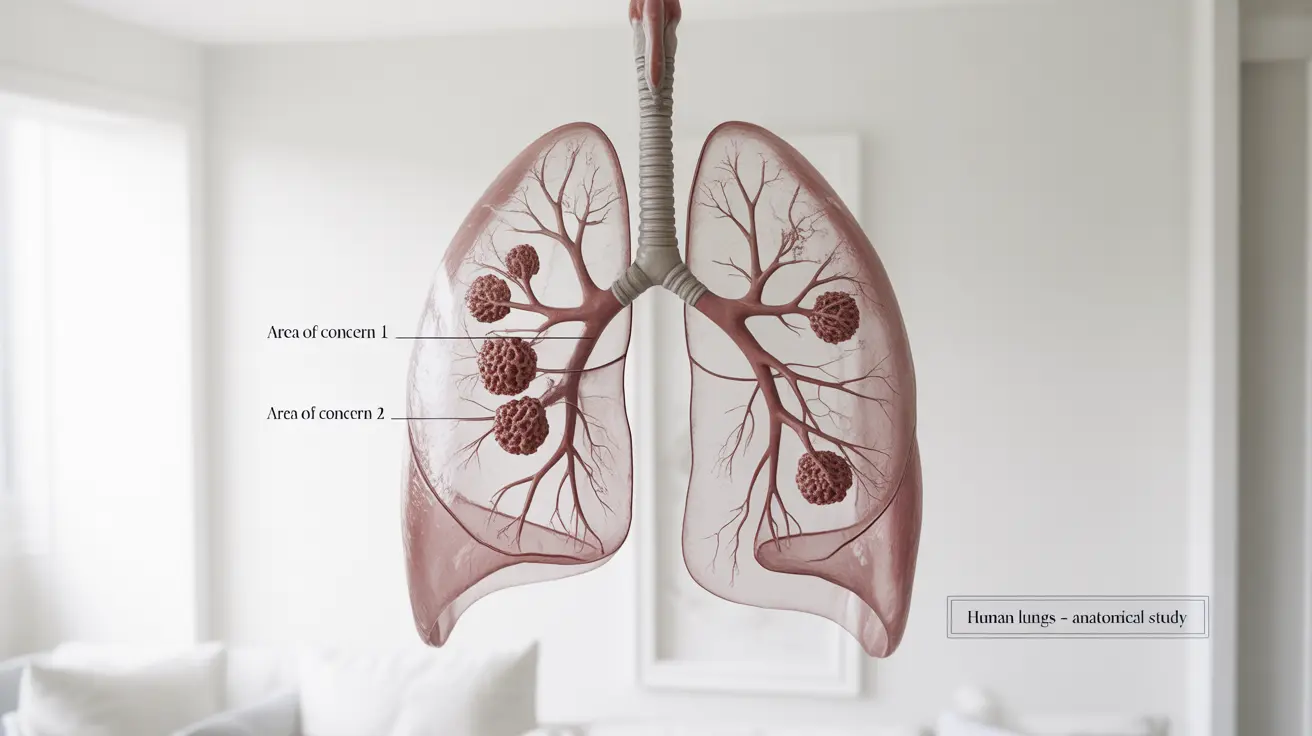Discovering you have a lung nodule can be concerning, but understanding the symptoms, diagnosis process, and treatment options can help you make informed decisions about your health. Lung nodules, also known as pulmonary nodules, are small masses of tissue in the lungs that require proper medical evaluation to determine their significance.
This comprehensive guide will explore the key aspects of lung nodules, including common symptoms, diagnostic procedures, and when to seek medical attention. We'll help you understand what these findings mean and what steps you should take for proper care.
Common Symptoms and Warning Signs
Many lung nodules are asymptomatic and are discovered incidentally during chest X-rays or CT scans performed for other reasons. However, when symptoms do occur, they may include:
- Persistent cough
- Shortness of breath
- Chest pain
- Wheezing
- Recurring respiratory infections
- Unexplained fatigue
It's important to note that these symptoms can be similar to other respiratory conditions, which is why proper medical evaluation is essential for accurate diagnosis.
Diagnostic Procedures for Lung Nodules
Healthcare providers use various diagnostic tools and procedures to evaluate lung nodules:
Imaging Tests
The primary diagnostic methods include:
- Chest X-rays
- CT scans
- PET scans
- MRI imaging
Biopsy Procedures
When further investigation is needed, doctors may recommend:
- Bronchoscopy
- Needle biopsy
- Video-assisted thoracoscopic surgery (VATS)
Common Causes and Risk Factors
Lung nodules can develop for various reasons, including:
Non-Cancerous Causes
- Infections (bacterial, fungal, or viral)
- Inflammation
- Scar tissue
- Benign tumors
Risk Factors
Several factors may increase the likelihood of developing lung nodules:
- Smoking history
- Previous lung infections
- Occupational exposure to certain substances
- Family history of lung disease
- Age and overall health status
Treatment Approaches
Treatment options vary depending on the nature of the nodule:
Monitoring
For small, benign-appearing nodules, doctors may recommend:
- Regular imaging follow-up
- Periodic health checks
- Monitoring for any changes in size or appearance
Active Treatment
If intervention is necessary, treatment options may include:
- Surgical removal
- Targeted therapy
- Radiation therapy
- Treatment of underlying infections or conditions
Prevention and Risk Reduction
While not all lung nodules can be prevented, certain steps can help reduce risk:
- Quit smoking or don't start
- Avoid exposure to harmful substances
- Maintain good respiratory health
- Get regular check-ups
- Practice good infection prevention
Frequently Asked Questions
What are the typical symptoms of lung nodules, and when should I be concerned? Most lung nodules don't cause symptoms. However, you should consult a healthcare provider if you experience persistent cough, chest pain, or breathing difficulties, especially if these symptoms worsen over time.
How are lung nodules usually diagnosed, and what tests are used? Lung nodules are typically diagnosed through imaging tests like chest X-rays and CT scans. Additional tests may include PET scans, blood tests, or biopsies, depending on the nodule's characteristics.
What are some common causes of lung nodules, and how can they be prevented? Common causes include infections, inflammation, and benign growths. Prevention strategies include avoiding tobacco, maintaining good respiratory health, and minimizing exposure to environmental toxins.
What are the differences between symptoms of lung nodules and pneumonia? While pneumonia typically causes acute symptoms like fever, cough with mucus, and chest pain, lung nodules are often asymptomatic. Pneumonia symptoms usually develop rapidly, while nodule-related symptoms, if present, tend to be more gradual.
How is a malignant lung nodule typically treated, and what are the treatment options? Treatment for malignant lung nodules may include surgery, radiation therapy, chemotherapy, or targeted treatments. The specific approach depends on factors like the nodule's size, location, and stage of development.




